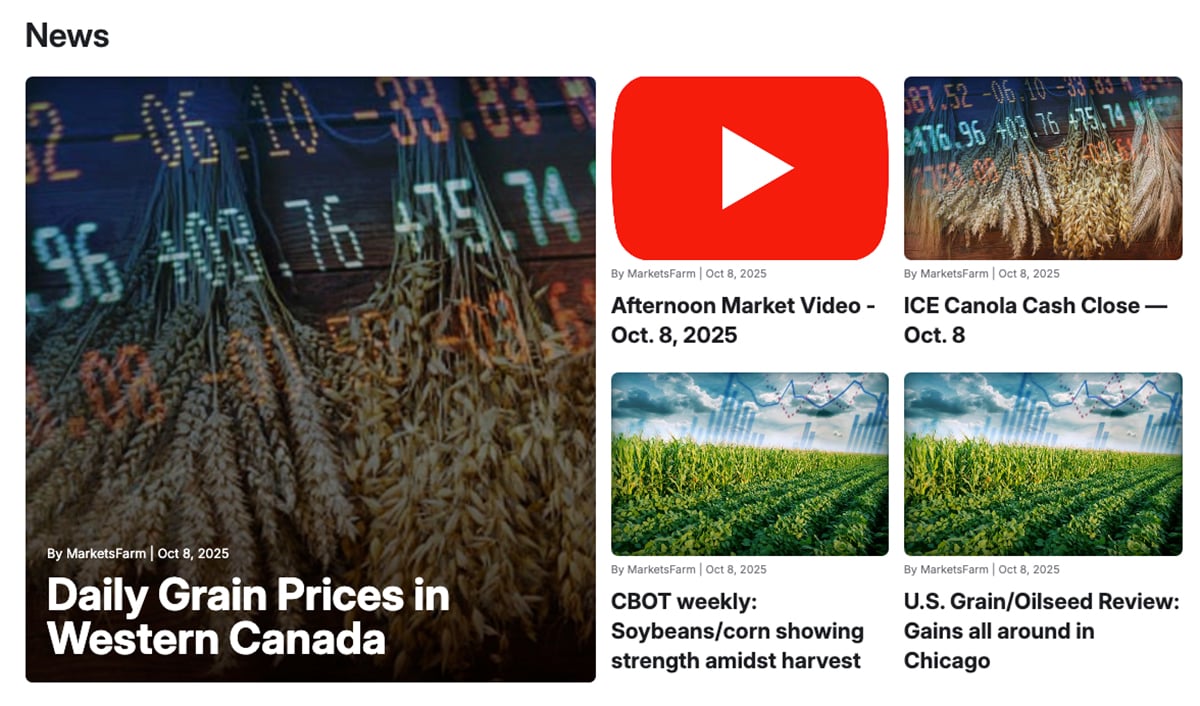Recent rule changes at the Chicago Mercantile Exchange are partially responsible for the frothy wheat market, says an analyst.
The CME implemented new rules last year allowing the all-months-combined speculative position limit for wheat to increase to 19,300 contracts from the former 12,000.
That effectively increased the influence of speculative investors on the price of Chicago wheat, which contributed to the volatility in the wheat market, said DTN lead analyst Todd Hultman.
Read Also

VIDEO: Catch up with the Western Producer Markets Desk
The Western Producer Markets Desk provides daily updates on agricultural markets, with recent video commentary including looks into canola, wheat, cattle and feed grains.
It is one reason Chicago May futures hit an all-time high of $13.63 per bushel on March 7.
Of course, the main factor is the overall tightness in the wheat market exacerbated by uncertainty of supply surrounding the war in Ukraine.
But increased speculator involvement in the market spurred the bull run. Traders were caught holding 101,577 contracts short at the time of Russia’s invasion of Ukraine.
“For the life of me, I can’t imagine why anybody would want to be short in wheat ahead of that war,” said Hultman.
The fundamentals before the war were already bullish coming off the worst North American wheat harvest in 19 years.
Once the stampede began, wheat went from $8.85 per bu. the day before the invasion began to $13.63 per bu. 12 days later. Then the shorts found it difficult to get out of their position.
“They had to buy back basically from commercials who obviously are very savvy and understand the market very well,” he said.
There was little selling opportunity as the market closed up-limit for five consecutive days.
Hultman shudders to think what the margin calls amounted to during that period. He said these “lightning moves” in futures prices hurt the integrity of the exchange.
“It really stresses the entire system.”
And while farmers benefit from high futures prices for the crops they grow, it also stresses them because the big run-up was followed by a $3 per bu. drop in the market a few days later.
“A lot of farmers wish, overall, that there was less speculative involvement in the markets,” said Hultman.
“The whole fragility and shakiness of the market situation is not something they’re very happy about.”
He worries about what will happen to prices if a ceasefire suddenly materializes in Ukraine.
“We could very easily envision a $2 drop or more in wheat on a peace deal,” said Hultman.
A further drop could be on the horizon if Ukraine salvages its winter wheat crop, although APK-Inform is forecasting a 28 percent loss in acres given the “current map of military activity.”
The U.S. hard red winter wheat crop is in trouble and there are lingering drought concerns in Western Canada.
But wheat fortunes can change on a dime and if producers around the world harvest a good crop in 2022, Hultman doesn’t rule out a return to $7 wheat.
He said the Chicago wheat market is more volatile than Kansas or Minneapolis due to the number of speculators who participate in that market.
It is counterintuitive in a way because the hard red winter wheat crop traded in Kansas and the hard red spring wheat crop traded in Minneapolis are much bigger than the soft red winter wheat crop traded in Chicago.
However, Chicago attracts the most speculators and tends to have the most futures price swings as a result.
Hultman noted that Chicago corn had a calmer response to the outbreak of war. At the time of the invasion, speculators were holding 85,156 contracts of corn short.
However, the numbers of longs outnumbered the shorts by more than seven-to-one, so there were opportunities for the shorts to get out of their position.
In the case of wheat, they had to buy back contracts from the commercials, who weren’t nearly as accommodating.
Hultman wonders if the recent runaway in Chicago wheat futures may have given the Commodity Futures Trading Commission (CFTC) pause for thought.
“Maybe we can’t stop foolish people from engaging in self-destructive behaviour,” he said.
“But the CFTC can certainly rethink its 2021 decision to allow more market-distorting speculators into U.S. ag markets. The world’s food supply deserves better.”
Contact sean.pratt@producer.com
















